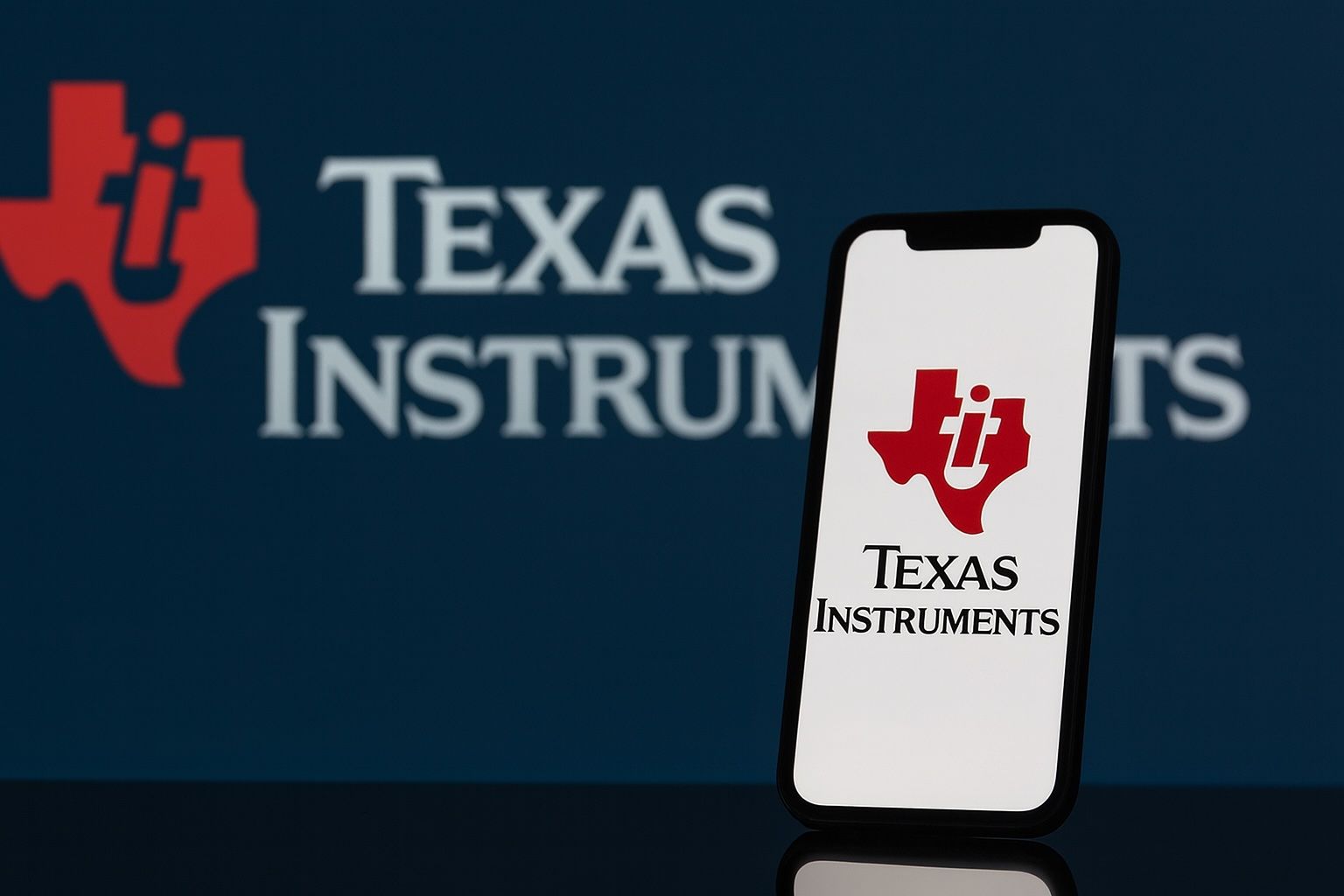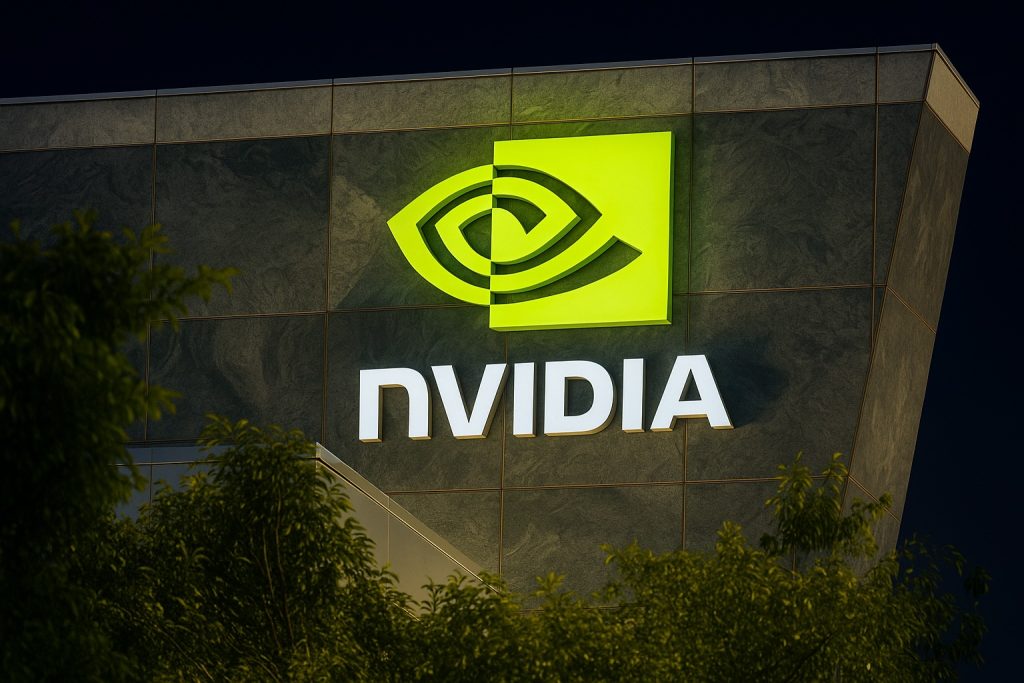What to Know Before Markets Open on October 20, 2025
- Price & Performance: TXN closed Friday at $176.58 (Oct 17, 2025), sitting roughly mid-way between its 52-week high (~$221.70) and low (~$139.95) [1] [2]. The stock has lagged the broader chip surge – the PHLX Semiconductor Index has nearly doubled (+~100%) in 2025 amid an AI-fueled rally [3] – leaving Texas Instruments up only modestly this year.
- Earnings & Dividend News:Q3 2025 earnings are due on Oct. 21, and analysts expect ~$1.47–$1.48 EPS on ~$4.65 billion revenue [4], essentially flat vs. $1.47 a year ago. The company recently hiked its quarterly dividend 4% to $1.42 (payable Nov. 12), marking 22 consecutive annual increases and yielding ~3.2% [5].
- Analyst Downgrade:Bank of America downgraded TXN to “Underperform” last week, slashing its price target to $190 (from $208). BofA warned of “rich valuation” and limited upside from the AI boom, citing macro headwinds, tariff pressures, and soft industrial demand that could constrain near-term growth [6] [7]. TXN’s own guidance for Q3 EPS ($1.36–$1.60) was roughly flat YoY, reflecting the sluggish environment [8].
- Chip Sector Trends: The semiconductor market presents a tale of two worlds. AI chip makers (e.g. Nvidia, TSMC) are thriving – TSMC just raised its 2025 revenue forecast to +30% on roaring AI demand [9] – but analog-focused firms like TI face inventory buildups and tepid orders in industrial and automotive segments. BofA notes TXN has “limited exposure to the AI capital expenditure cycle” and faces gross margin risks if factory utilization stays low [10] [11]. Back in July, Texas Instruments’ cautious outlook sent its stock plunging 12–13% in a day despite solid Q2 results, dragging peers NXP, Analog Devices and ON Semi down 1–5% in sympathy [12]. Conditions have improved slightly since – TXN’s stock has rebounded off summer lows – but the market narrative remains cautious.
- Strategic Updates: In brighter news, Texas Instruments’ board approved the $1.42 dividend (up from $1.36) on Oct. 16 [13], reinforcing the company’s commitment to shareholder returns. TI also announced a leadership transition: longtime chairman Rich Templeton will retire at 2025’s end, with CEO Haviv Ilan (a 26-year TI veteran) set to assume the chairman role in 2026 [14]. This planned succession signals continuity in strategy [15], as Ilan has emphasized ongoing investment in analog & embedded chips for cars and industry – the core markets TI deems its growth “megatrends.” Analysts say the leadership change “is not expected to materially impact near-term catalysts” like auto/industrial demand, though it underscores TI’s long-term focus [16].
- Valuation & Financials: Texas Instruments’ fundamentals remain solid, but richly priced. At ~$176/share, TXN trades around 32× trailing earnings (PE ~32) with a PEG ratio ~2.8 [17], well above many peers. BofA highlights that on 2026 estimates, TI is valued at ~31× EV/FCF versus Analog Devices’ ~24×, even though TI’s free cash flow margins (~9%) vastly trail ADI’s (~35–40%) [18]. In short, investors are paying a premium for TXN’s stability and high margins (TI boasts ~30% net profit margins and 30%+ ROE [19]), but growth expectations are muted. Last quarter, TI’s revenue rose 16% YoY [20], yet forward guidance implies a plateau. Inventory is a watch item – TXN built up stock during the chip shortage, and now slowing demand means customers are drawing down inventories. Any pickup in orders (e.g. if China’s economy or auto sales improve) could quickly translate into upside for TI’s sales, but the timing is uncertain.
- Wall Street Sentiment:Analysts are split on TXN’s outlook. Some see opportunity in the current lull: “High-quality asset, poised to benefit if industrial demand rebounds or U.S. reshoring accelerates,” BofA noted, even as it issued a cautious call [21]. Goldman Sachs initiated coverage with a Buy and $255 target in July, and UBS likewise set $255 (seeing long-term growth in automotive chips) [22]. Wolfe Research upgraded TXN to Outperform with a $230 target after Q2, predicting a cyclical upturn [23]. On the flip side, Wells Fargo cut its target from $215 to $195 (Equal Weight) amid near-term margin concerns [24], and BofA’s $190 target implies limited upside until macro conditions improve. According to MarketBeat, the consensus rating is “Hold” with 2 Strong Buys, 12 Buys, 13 Holds, and 5 Sells [25]. The average price target of around $213 suggests ~20% upside from current levels [26], but this average conceals the wide bull-bear divide (street targets range from as high as ~$245–$255 to lows near ~$125 [27]).
- Growth Models & Forecasts: Quantitative models also paint a mixed picture. Validea’s Martin Zweig growth model recently gave TXN a 69% score, indicating the stock passes many growth criteria (reasonable P/E, rising sales and earnings, insider buying) but fails on high debt and slowing long-term EPS growth [28]. This implies “moderate interest” – solid fundamentals yet not a screaming buy [29]. Meanwhile, Simply Wall St estimates a fair value around ~$203 per share for TI based on projected cash flows, about 15% above the current price [30]. That suggests the stock is slightly undervalued if TI can hit its targets (the company is forecast to reach ~$22.3B revenue and $7.9B earnings by 2028, requiring ~10% annual growth [31]). However, those forecasts may prove optimistic if the semiconductor cycle doesn’t cooperate.
- TXN Stock Forecast – What’s Next: In the short term, all eyes are on Tuesday’s earnings. Traders anticipate a relatively small move on results (~±2–3% swing) unless TXN surprises [32], given that expectations are subdued. Key metrics to watch: any signs of an orders rebound in industrial/auto, and management’s Q4 guidance (which will reveal if the downturn has bottomed). TXN’s order backlog and inventory levels will be telling for demand trends. Near-term risk factors include geopolitical issues (TI faces China export restrictions and global tariff uncertainties) and continued weakness in sectors like personal electronics. On the other hand, upside catalysts could emerge: a stabilization in interest rates and economic conditions may revive capital spending on factory equipment and cars, directly lifting TI’s analog chip sales. Longer-term, Texas Instruments is betting big on capacity expansion – it’s investing in new 300mm wafer fabs in Texas and Utah to secure future supply. If demand normalizes, these investments and TI’s fab-centric advantage (owning production rather than outsourcing) could drive margin expansion.
Bottom Line:Texas Instruments stock is at a crossroads in late 2025. It offers a healthy dividend, fortress financials, and industry leadership in analog chips – qualities that have long attracted value investors. Yet the stock’s recent underperformance reflects real concerns: growth has stalled post-pandemic, and the market’s hype has shifted to AI chips where TI isn’t a major player. With the share price roughly 20% off its highs [33], the question is whether this is a breather before the next climb – or a value trap until the cycle turns. Most analysts counsel patience, essentially a “Hold”, until clearer signs of revival emerge [34]. In the meantime, investors are paid to wait (3%+ yield) and can take comfort that TI’s conservative management and broad end-market exposure position it to weather the storm. Short-term volatility is likely around the earnings release and any macro news, but barring a severe downturn, the consensus view sees moderate upside over the next year as conditions improve [35]. For bulls, TXN represents a steady compounder poised to benefit when industrial and automotive demand inevitably pick up. For bears, the stock’s rich valuation and lack of AI exposure mean it could continue lagging flashier tech names. As Q3 results arrive, TXN will set the tone for how much longer investors need to stay in wait-and-see mode on this semiconductor bellwether.
Sources: Texas Instruments Investor News [36] [37]; MarketBeat Instant Analysis [38] [39]; BofA Research via Investing.com [40] [41] and Tiger Brokers (MT Newswires) [42] [43]; Simply Wall St [44] [45]; TS² TechStock Daily [46] [47]; StockInvest.us Data [48] [49].
References
1. stockinvest.us, 2. stockinvest.us, 3. www.barchart.com, 4. www.marketbeat.com, 5. www.marketbeat.com, 6. www-web.itiger.com, 7. www-web.itiger.com, 8. www.marketbeat.com, 9. www.reuters.com, 10. www-web.itiger.com, 11. www-web.itiger.com, 12. ts2.tech, 13. www.marketbeat.com, 14. simplywall.st, 15. simplywall.st, 16. simplywall.st, 17. www.marketbeat.com, 18. www.investing.com, 19. www.marketbeat.com, 20. www.marketbeat.com, 21. www-web.itiger.com, 22. www.marketbeat.com, 23. www.marketbeat.com, 24. www.marketbeat.com, 25. www.marketbeat.com, 26. www.marketbeat.com, 27. www.investing.com, 28. ts2.tech, 29. ts2.tech, 30. simplywall.st, 31. simplywall.st, 32. stockinvest.us, 33. stockinvest.us, 34. www.marketbeat.com, 35. www.marketbeat.com, 36. www.ti.com, 37. www.ti.com, 38. www.marketbeat.com, 39. www.marketbeat.com, 40. www.investing.com, 41. www.investing.com, 42. www-web.itiger.com, 43. www-web.itiger.com, 44. simplywall.st, 45. simplywall.st, 46. ts2.tech, 47. ts2.tech, 48. stockinvest.us, 49. stockinvest.us







